
Consumer Insights
Uncover trends and behaviors shaping consumer choices today
Procurement Insights
Optimize your sourcing strategy with key market data
Industry Stats
Stay ahead with the latest trends and market analysis.
The Expert Market Research report, titled “Barium Hypophosphite Manufacturing Plant Project Report 2026 Edition: Industry Trends, Capital Investment, Price Trends, Manufacturing Process, Raw Materials Requirement, Plant Setup, Operating Cost, and Revenue Statistics” includes various aspects that are critical for establishing a barium hypophosphite plant. These include infrastructure requirements, transportation requirements, utility specifications, and financial and economic analysis, among others.
The demand for barium hypophosphite is increasing due to its expanding applications in agriculture and the polymer industry. In agriculture, it serves as a valuable phosphorus source, enhancing nutrient availability and improving crop yields. Additionally, in the polymer sector, barium hypophosphite is increasingly used as a flame retardant and stabilizer, helping manufacturers meet stringent safety regulations. Furthermore, environmental considerations are driving the demand for barium hypophosphite as a non-toxic alternative to traditional phosphorus compounds. Its low toxicity profile appeals to companies seeking to reduce their ecological footprint.
Other elements to consider while establishing a barium hypophosphite plant include raw material sourcing, workforce planning, and packaging. The production of barium hypophosphite relies on several key raw materials, such as barium hydroxide and hypophosphorous acid. Barium hydroxide is typically obtained from barium carbonate through a reaction with calcium hydroxide, while hypophosphorous acid can be derived from the hydrolysis of phosphorus or through the reaction of phosphoric acid with reducing agents. These materials are essential for producing barium hypophosphite, which is used in agriculture, electronics, and metallurgy, among other sectors.
Moreover, to help stakeholders determine the economics of a barium hypophosphite plant, project funding, capital investments, and operating expenses are analyzed. Projections for income and expenditure, along with a detailed breakdown of fixed and variable costs, direct and indirect expenses, and profit and loss analysis, enable stakeholders to comprehend the financial health and sustainability of a business. These projections serve as a strategic tool for evaluating future profitability, assessing cash flow needs, and identifying potential financial risks.
However, challenges such as geopolitical unrest and raw material shortages may threaten supply stability for barium hypophosphite production. To combat this, manufacturers can diversify their sourcing strategies by establishing relationships with multiple suppliers across different regions. This approach can mitigate supply chain risks by reducing dependency on a single source and ensuring a steady flow of raw materials.
Barium hypophosphite, with the formula Ba(H2PO2)2, is an inorganic compound that serves various applications, particularly in the fields of agriculture and materials science. It acts as a fertiliser and is also used in the synthesis of other barium compounds. Its properties include being a white crystalline solid that is soluble in water, which makes it useful in various chemical reactions. Barium hypophosphite was first produced in the late 19th century when researchers were exploring barium's potential in agriculture. The compound gained attention for its role in promoting plant growth. Over the years, its applications have expanded into industrial processes, particularly in phosphor production.
Barium hypophosphite is a white, crystalline powder that is odourless and soluble in water, with a solubility of approximately 28.6 g/100 mL at 17°C, increasing to 33.3 g/100 mL at 100°C. Its molecular formula is Ba(H2PO2)2 with a molecular weight of 267.30 g/mol. The compound exhibits a monoclinic crystal system and has a density of about 2.90 g/cm³. Chemically, it reacts with concentrated sulfuric acid to produce hypophosphorous acid and barium sulfate, indicating its reactivity with strong acids. Barium hypophosphite is considered toxic and should be handled as per the set safety standards.
The production of barium hypophosphite begins with the selection of barium carbonate (BaCO3) or barium oxide (BaO) as the primary reactant. These compounds are chosen due to their availability and reactivity. The second step in the manufacturing process is the reaction of barium carbonate or barium oxide with hypophosphorous acid (H3PO2). This reaction occurs in an aqueous solution, where the barium compound reacts with hypophosphorous acid to form barium hypophosphite, represented by the formula Ba(H2PO2)2.
Once the reaction is complete, the resulting mixture contains barium hypophosphite along with by-products and excess reactants. To purify the product, water is evaporated from the solution, concentrating the barium hypophosphite. Following evaporation, the solution is allowed to cool, facilitating the crystallisation of barium hypophosphite. The crystallised product is then collected through filtration. The final step involves drying the crystals to obtain an anhydrous form of barium hypophosphite, which enhances its stability and usability in various applications.

Read more about this report - REQUEST FREE SAMPLE COPY IN PDF
Barium hypophosphite is produced through the reaction between barium chloride (BaCl2) and sodium hypophosphite (Na2HPO2). Below is a detailed explanation of the process:
1. Preparation of Sodium Hypophosphite:
Sodium hypophosphite is often prepared by the reaction between phosphorous acid (H3PO3) and sodium hydroxide (NaOH).
H3PO3 + NaOH → Na2HPO2 + H2O
In this reaction, one mole of phosphorous acid reacts with one mole of sodium hydroxide to produce sodium hypophosphite and water.
2. Reaction to Form Barium Hypophosphite:
In the second step, sodium hypophosphite reacts with barium chloride (BaCl2).
BaCl2 + 2 NaH2PO2 → Ba(H2PO2)2 + 2 NaCl
Here, one mole of barium chloride reacts with two moles of sodium hypophosphite to form one mole of barium hypophosphite and two moles of sodium chloride as a byproduct.
Industrial Process Overview:
1. Mix a solution of sodium hypophosphite (Na2HPO2) in water.
2. Add barium chloride (BaCl2) solution to the sodium hypophosphite solution.
3. Barium hypophosphite (Ba(H2PO2)2) will precipitate out as a solid. This precipitate is filtered and dried to obtain pure barium hypophosphite.
4. The byproduct sodium chloride (NaCl) remains dissolved in the solution and can be removed by filtration.
Applications of barium hypophosphite include its role as a reducing agent in electroplating, which enhances the durability and corrosion resistance of metal surfaces, particularly in the automotive and electronics sectors. The global electroplating market is expected to grow, which can further drive the demand for barium hypophosphite. Additionally, this compound is used in water treatment processes to effectively remove heavy metals from industrial wastewater, addressing critical environmental concerns.
Drivers of the market are closely tied to the rapid industrialisation observed in regions like Asia-Pacific, where increased manufacturing activities lead to higher waste discharge into water bodies. For instance, a report from Niti Aayog indicates that daily wastewater generation in India is projected to rise from 62 million liters per day (MLD) in 2022 to around 145 MLD by 2030, which highlights the urgent need for effective water treatment solutions. Furthermore, government initiatives aimed at improving water quality are becoming more pronounced as many countries are implementing stricter regulations on wastewater discharge. For example, the U.S. Environmental Protection Agency (EPA) has set new standards under the Clean Water Act that require industries to reduce pollutant discharges by up to 30% by 2025. These factors showcase a growing demand for barium hypophosphite in both industrial applications and environmental management efforts.
A detailed overview of production cost analysis that evaluates the manufacturing process of barium hypophosphite is crucial for stakeholders considering entry into this sector. Furthermore, stakeholders can make informed decisions based on the latest economic data, technological innovations, production process, requirements of raw materials, utility and operating costs, capital investments by major players, pricing strategies, and profit margins. For instance, technological advancements are improving production of high-purity barium hypophosphite, increasing its accessibility in pharmaceuticals and electronics.
Recent methods such as mechanochemical hydride phosphorylation allow for the efficient synthesis of hypophosphite without the need for hazardous intermediates like white phosphorus. Additionally, advancements in electrodialysis techniques have streamlined the production of hypophosphorous acid, a precursor to barium hypophosphite. This method allows for the separation and purification of products with high efficiency, reducing waste and energy consumption. Such innovations are providing better opportunities for makers of barium hypophosphite, which is needed in electroless plating processes for printed circuit boards and semiconductor devices.
Below are the sections that further detail the comprehensive scope of the prefeasibility report for a barium hypophosphite production plant:
Market Dynamics and Trends: Factors such as rising popularity in the food industry are significantly affecting market conditions in the barium hypophosphite sector. Barium hypophosphite’s potential antimicrobial properties are gaining attention in the food industry, where food safety is a growing concern. Studies have shown that barium hypophosphite can inhibit the growth of various bacteria, including Escherichia coli and Staphylococcus aureus, which are common pathogens associated with foodborne illnesses. Additionally, the increasing focus on natural and non-toxic preservatives in food processing has led to a growing interest in barium hypophosphite as a safer alternative to traditional chemical preservatives. Its low toxicity profile makes it an attractive option for food manufacturers aiming to enhance food safety while adhering to regulatory standards. As consumer awareness regarding food safety rises, the incorporation of barium hypophosphite into food preservation strategies could become more prevalent, further driving its demand in the food industry. Understanding these demands and trends helps businesses align their production plans in the barium hypophosphite market.
Profiling of Key Industry Players: Leading manufacturers like American Elements and Anish Chemicals are included in the barium hypophosphite report. Recently, American Elements announced its capability to produce barium hypophosphite in various grades, including high purity forms suitable for pharmaceuticals and electronics.
Economic Analysis: Capital expenditure (CAPEX) analysis provides stakeholders the knowledge about required investments in advanced technologies, efficient machinery, and necessary infrastructure. Investing in high-capacity mixing equipment, such as a continuous mixer or high-shear mixer, can improve production efficiency by 20-30%. Investing in energy-efficient systems, such as combined heat and power (CHP) systems could reduce energy consumption by up to 30%, as these systems use waste heat from production processes to generate electricity and provide heating.
Fluctuations in barium hypophosphite prices are influenced by several key factors, particularly the costs of essential raw materials such as barium carbonate and hypophosphorous acid. The prices of these raw materials can vary significantly due to supply chain disruptions, geopolitical factors, and changes in demand across various industries. Additionally, the production process itself can impact pricing; advancements in manufacturing technology that improve yield and reduce waste may help stabilize costs over time. As industries increasingly adopt barium hypophosphite for applications in agriculture, electronics, and pharmaceuticals, any increase in demand for its raw materials could lead to higher overall prices for the final product. Thus, manufacturers must remain vigilant about market trends and raw material availability to navigate these fluctuations effectively.
Establishing a barium hypophosphite manufacturing facility requires a comprehensive financial investment that encompasses various elements critical to the project's success. The following sections detail these components:
Projected profit margins and effective product pricing strategies improve overall profitability. Manufacturers might target a profit margin of around 20-30%, achieved through strategic pricing based on raw material costs and prevailing market demand. Effective pricing strategies should consider fluctuations in raw material prices and competitive positioning within the market.
This prefeasibility report aims to equip potential investors and existing manufacturers with crucial insights to make informed decisions in the barium hypophosphite industry.




*While we strive to always give you current and accurate information, the numbers depicted on the website are indicative and may differ from the actual numbers in the main report. At Expert Market Research, we aim to bring you the latest insights and trends in the market. Using our analyses and forecasts, stakeholders can understand the market dynamics, navigate challenges, and capitalize on opportunities to make data-driven strategic decisions.*
Get in touch with us for a customized solution tailored to your unique requirements and save upto 35%!
Basic Plan
USD 5,699
USD 4,844
Get Startedtax inclusive*
Raw Material and Product Specification, Raw material consumption, Process flow diagram
Machinery Cost, Working Capital
Utilities consumption, Operating cost, Overheads, Financing Charges, GSA , Packaging
Premium Plan
USD 6,799
USD 5,779
Get Startedtax inclusive*
Key Processing Information, Capital Investment Analysis, Conversion Cost Analysis
Raw material consumption and prices, Utilities consumption breakdown, By-Product Credit, Labour Charges Breakdown
Land and Site Cost, Equipment Cost, Auxiliary Equipment Cost, Contingency, Engineering and Consulting Charges
Enterprise Plan
USD 8,899
USD 7,564
Get Startedtax inclusive*
Key Processing Information, Capital Investment Analysis, Conversion Cost Analysis, Variable Cost Breakdown, Investing Cost Breakdown,
Breakdown of machinery cost by equipment, Auxiliary Equipment Cost, Piping, Electrical, Instrumentation
Cost of Construction, Plant Building, Site Development Charges
Land Cost, Development Charges
Dynamic Spreadsheet (Unlocked)
*Please note that the prices mentioned below are starting prices for each bundle type. Kindly contact our team for further details.*

Basic Plan
USD 5,699
USD 4,844
Key Processing Information
Raw Material and Product Specification, Raw Material Consumption, Process Flow Diagram
Capital Investment Analysis
Machinery Cost, Working Capital
Conversion Cost Analysis
Utilities Consumption, Operating Cost, Overheads, Financing Charges, GSA , Packaging

Premium Plan
USD 6,799
USD 5,779
All Contents of Basic Report
Key Processing Information, Capital Investment Analysis, Conversion Cost Analysis
Variable Cost Breakdown
Raw Material Consumption and Prices, Utilities Consumption, Breakdown By-Product Credit, Labour Charges Breakdown
Investing Cost Breakdown
Land and Site Cost, Equipment Cost, Auxiliary Equipment Cost, Contingency, Engineering and Consulting Charges

Enterprise Plan
USD 8,899
USD 7,564
Includes all Report Content
Key Processing Information, Capital Investment Analysis, Conversion Cost Analysis, Variable Cost Breakdown, Investing Cost Breakdown,
Equipment Cost Breakdown
Breakdown of Machinery Cost By Equipment, Auxiliary Equipment Cost, Piping, Electrical, Instrumentation
Land and Construction Cost Details
Land Cost, Development Charges, Cost of Construction, Plant Building, Site Development Charges
Dynamic Excel Cost Model
Dynamic Spreadsheet (Unlocked)
*Please note that the prices mentioned below are starting prices for each bundle type. Kindly contact our team for further details.*
Flash Bundle
Number of Reports: 3
20%
tax inclusive*
Small Business Bundle
Number of Reports: 5
25%
tax inclusive*
Growth Bundle
Number of Reports: 8
30%
tax inclusive*
Enterprise Bundle
Number of Reports: 10
35%
tax inclusive*
How To Order

Select License Type
Choose the right license for your needs and access rights.

Click on ‘Buy Now’
Add the report to your cart with one click and proceed to register.

Select Mode of Payment
Choose a payment option for a secure checkout. You will be redirected accordingly.
Gain insights to stay ahead and seize opportunities.
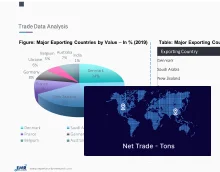
Get insights & trends for a competitive edge.
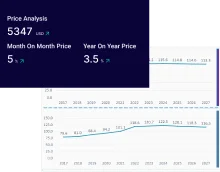
Track prices with detailed trend reports.
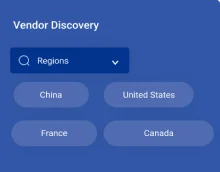
Analyse trade data for supply chain insights.

Leverage cost reports for smart savings
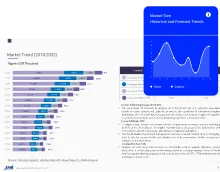
Enhance supply chain with partnerships.
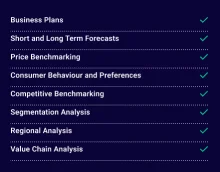
Connect For More Information
Our expert team of analysts will offer full support and resolve any queries regarding the report, before and after the purchase.
Our expert team of analysts will offer full support and resolve any queries regarding the report, before and after the purchase.
We employ meticulous research methods, blending advanced analytics and expert insights to deliver accurate, actionable industry intelligence, staying ahead of competitors.
Our skilled analysts offer unparalleled competitive advantage with detailed insights on current and emerging markets, ensuring your strategic edge.
We offer an in-depth yet simplified presentation of industry insights and analysis to meet your specific requirements effectively.
Share